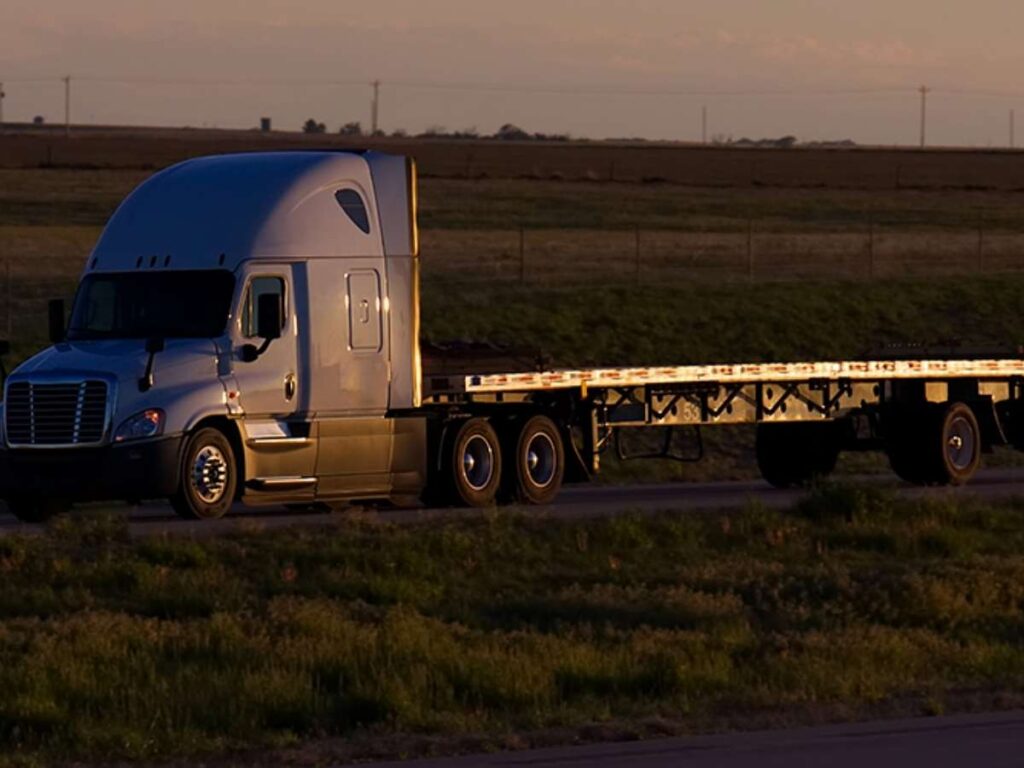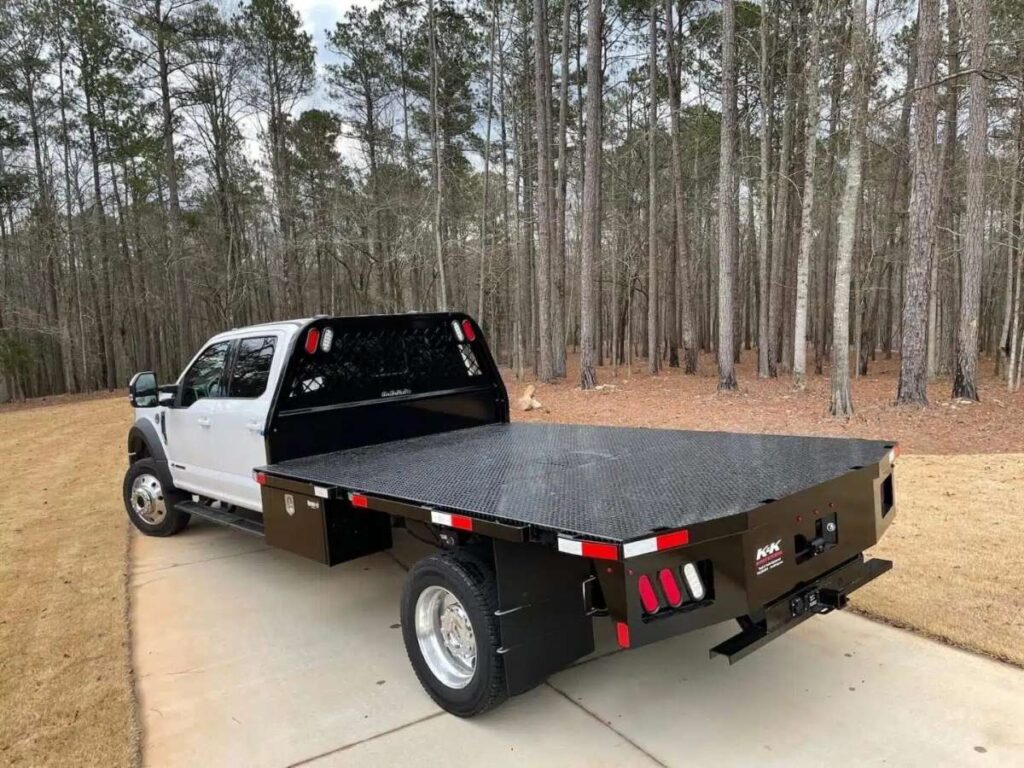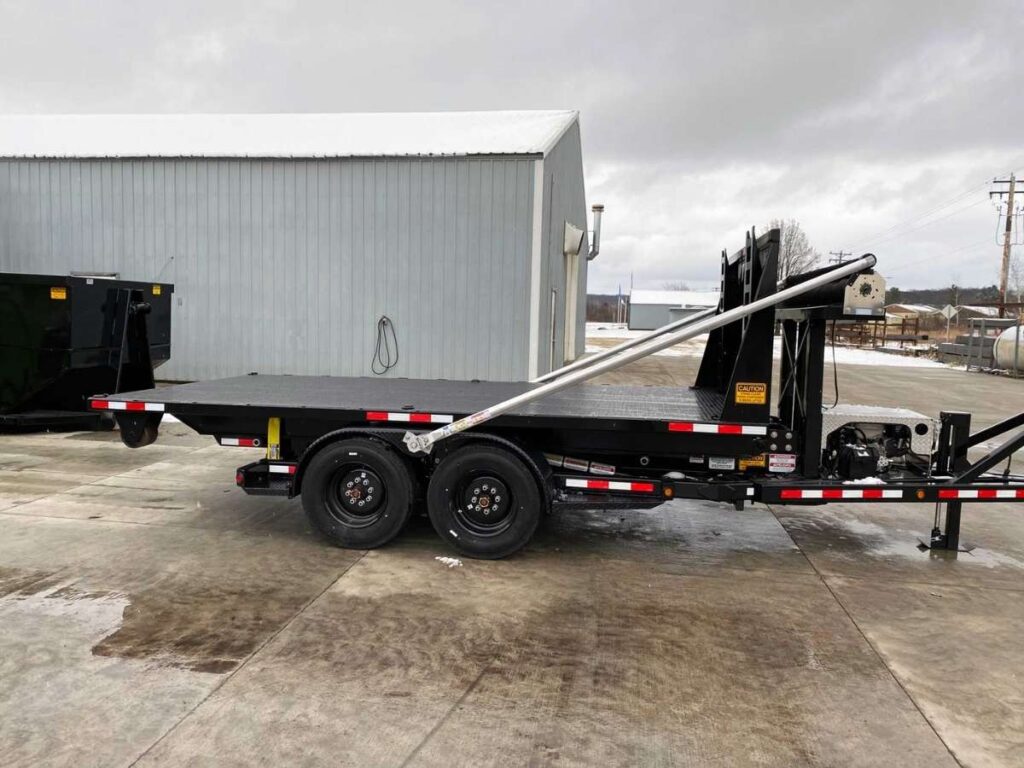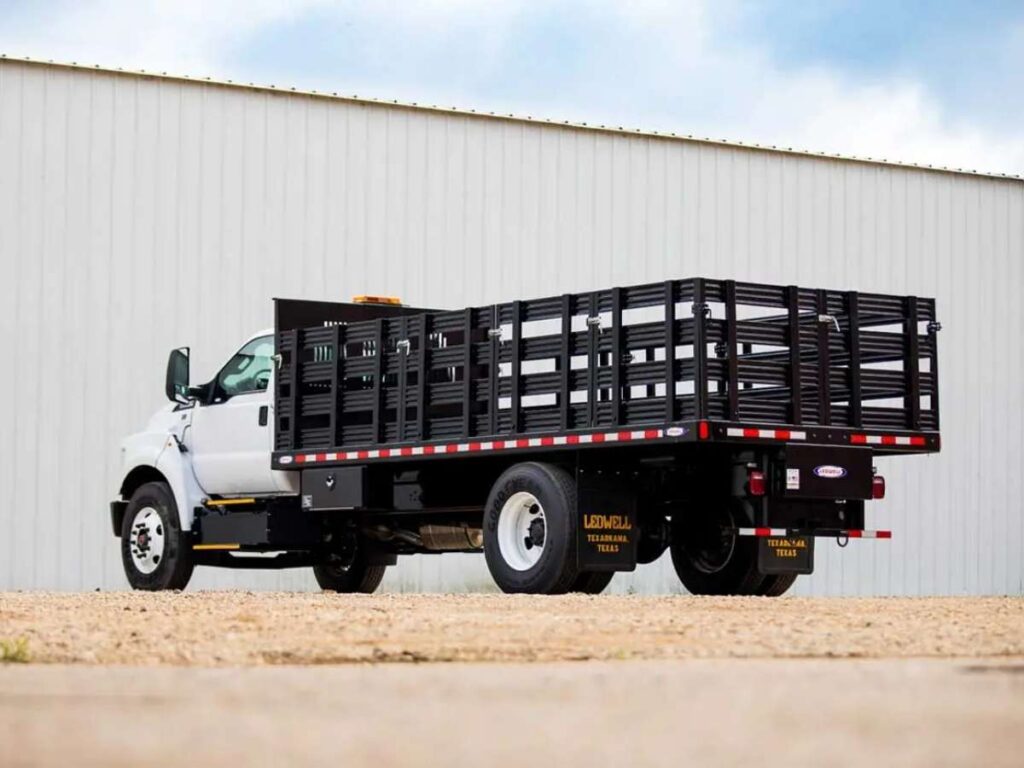We had the load secured. The route was set. But something didn’t feel right about the flatbed rental I picked.
That moment taught me how much transport choices affect the whole job. Over the years, I’ve worked with companies that haul machinery, raw materials, and large cargo—each with its own needs.
In this guide, I’ll share everything I’ve learned about flatbed truck rentals and how they compare to other setups.
You’ll get practical advice on what works based on weight, distance, cost, and how flexible the job needs to be.
By the end, you’ll have what you need to make the best decision for your move.
So let’s get started!
1. Benefits of Renting a Flatbed Truck
Renting a flatbed truck makes sense in more situations than you might think. I’ve worked with companies that only need extra hauling power a few times a year. Buying a truck for occasional use? That just didn’t add up.
When you rent, you get a practical, flexible solution without the burden of ownership.
A Short-Term Solution That Works
For seasonal work, special projects, or one-off deliveries, rental gives you the freedom to scale up without long-term cost. There’s no big financial commitment, no loan to worry about, and no ongoing maintenance to deal with once the job is done.
That peace of mind can make a big difference.
No Maintenance, No Long-Term Pressure
When you own a truck, you also own the repair bills. Oil changes, tire wear, breakdowns—they all come out of your pocket. Renting avoids that. You return the truck when you’re done, with no future costs or downtime to manage.
It keeps things simple.
Great for Testing New Routes or Jobs
I’ve seen businesses use rentals when testing new delivery areas or job types. One company I worked with rented a flatbed to deliver machinery to a new site. The job helped them decide if expanding into that region made sense. Because they rented, they didn’t risk buying equipment they might not need again.
It gave them clarity—and saved them money.
Access to Newer Equipment
Most rental fleets are kept up-to-date. That means you’ll likely get a newer truck with better fuel use, safety features, and smoother handling. You don’t have to deal with aging equipment or unexpected breakdowns. You just pick it up and get to work.
2. Types of Flatbed Trucks Available for Rent
On one of my early jobs, we rented the wrong type of flatbed—and it turned a simple delivery into an all-day struggle.
That’s when I realized how important it is to match the truck to the cargo. Flatbed trucks may look similar, but each type has specific strengths. Whether you’re hauling heavy equipment, raw materials, or pallets, the right setup can save you time and make the job run smoother.
Here’s a look at the most common types you’ll find when renting.
Standard Flatbed Truck
This is the basic open-deck option with no sides or roof. It’s widely used and works for many everyday jobs.
Best for:
- Pallets
- Construction materials
- Machinery with easy tie-down points
It’s a simple, go-to choice for general cargo. If you just need space and access, this one usually does the job.

Gooseneck Flatbed Truck
This truck has a front section that drops down and connects to a ball hitch in a pickup bed. That design helps spread out weight and keeps the load stable—especially on longer drives.
Best for:
- Heavy loads
- Long hauls
- Unpaved or uneven roads
Goosenecks give better control. They’re often used when load weight or road conditions are a concern.

Tilt or Roll-Off Flatbed
This type has a bed that tilts back, making it easy to slide equipment on or off without extra tools.
Best for:
- Skid steers
- Small machinery
- Short hauls with limited crew
If your team doesn’t have a forklift or ramp on-site, this truck can save time and effort.

Stake Bed Truck
A stake bed is a flatbed with removable side panels. You still have easy access, but the stakes help hold things in place.
Best for:
- Loose or bulky items
- Landscaping materials
- Shorter trips where stability matters
The sides add security without blocking loading from different angles.

3. Key Things to Consider Before Renting a Flatbed Truck
Renting a flatbed truck may seem simple at first—but there are a few important things you need to think through before you commit. The right choice can keep your job on schedule, your cargo safe, and your budget under control.
If you skip the planning, small issues can turn into big ones. That’s why it helps to go in prepared.
Know What You’re Hauling
Before anything else, figure out your payload—the total weight of your cargo.
Flatbed trucks have weight limits, and every load is different. Are you hauling machinery, building supplies, or pallets of goods? You’ll need to match the truck to the load. Going too light means more trips. Too heavy, and you risk safety issues or fines.
If you’re unsure about weight, ask the supplier or check product specs. Getting this part right saves a lot of trouble down the line.
Look at the Route
Where your truck is going matters just as much as what it’s carrying.
Tight city streets, long highway runs, or job sites with rough terrain all require different setups. A shorter flatbed might be easier in urban areas, while off-road routes might need something more stable and durable.
Think through your pickup and drop-off points. Will the truck fit where it needs to go? Can it handle the road surface?
Pick the Right Rental Duration
Rental terms are usually flexible: daily, weekly, or monthly.
Short-term works for quick jobs, but longer projects may save money with weekly or monthly pricing. It’s always better to plan extra time than to rush and need an extension.
Check Driver Licensing and Experience
Some flatbed trucks require a Commercial Driver’s License (CDL), depending on size and weight.
If you’re driving yourself, make sure your license matches the truck. If you’re hiring a driver, ask about their experience with flatbeds. These trucks handle vehicles differently than regular vehicles—especially when loaded.
Review Insurance Coverage
No one likes to talk about insurance, but it’s a big deal.
Some rental companies offer it. Others expect you to bring your own. You may need general liability, physical damage, or cargo coverage depending on the job. Checking in with your provider ahead of time can save you from unexpected costs later
4. Cost Considerations When Renting a Flatbed Truck
When you’re renting a flatbed truck, cost is always on your mind. You want to get the job done without spending more than you need to. I’ve worked with businesses who thought they were getting a great deal—until the extras added up. That’s why it’s important to understand the full cost, not just the price on the rental ad.
Base Rates Vary by Size and Type
The size and type of flatbed truck you choose will affect the base rental rate.
A standard 20-foot truck might cost less than a heavy-duty gooseneck or tilt bed. Daily rates are usually cheaper if you only need the truck for a short job, but weekly or monthly pricing may offer better value for longer projects.
Ask about pricing for:
- Daily rentals
- Weekly rentals
- Monthly rentals
You’ll want to match your rental term to your project timeline.
Watch for Mileage and Fuel Charges
Some rental companies give you a set number of free miles per day. After that, they charge per mile.
Also, check the fuel policy. Most rentals require you to return the truck with a full tank. If not, you may get charged for a refill—usually at a higher rate than at the pump.
Insurance Costs Add Up
Insurance may be included in your rental, or it might be something you’re expected to provide. Some companies offer optional coverage, but others require you to show proof of your own.
You might need:
- Liability insurance
- Physical damage coverage
- Cargo insurance
Ask About Delivery, Pick-Up, and Deposits
If you’re not picking up the truck yourself, some companies charge a fee for delivery and return. You may also be asked to leave a deposit before you drive off the lot.
Returning the truck late? There’s usually a penalty—sometimes by the hour.
5. Important Rental Terms and Rules to Know
Before you rent a flatbed truck, you’ll want to understand the rental terms. I’ve seen people run into surprise fees—not because they broke the rules, but because they didn’t know them.
It doesn’t take long to go over the basics. And doing so can help you avoid mistakes that cost you time and money.
Here are the key terms and rules you should know:
- Lease agreements matter: This is the contract between you and the rental company. It lists what’s allowed, what’s not, and what happens if something goes wrong. Take your time reading it. If something seems unclear, ask.
- Mileage and weight limits: Some rentals give you a daily mileage allowance. Go over it, and you’ll be charged extra per mile. Also, check the weight rating of the truck. Overloading can lead to damage—or fines if you’re stopped on the road.
- Maintenance responsibilities: Normal wear and tear is usually covered by the rental company. But if something breaks because of how you use the truck, you may be responsible for repairs. Always check tire pressure, fluid levels, and warning lights before and after your trip.
- Fuel return policy: Most rentals follow a full-to-full fuel policy. That means you pick it up full, and you bring it back full. If not, you’ll be charged for the missing fuel—often at a higher price than a regular gas station.
- Damage checks and return inspection: When you return the truck, the company will inspect it for damage. Any new dents, scrapes, or broken parts could lead to extra charges. It’s smart to take photos of the truck before and after your rental. It gives you proof of its condition
6. Common Mistakes to Avoid When Renting a Flatbed Truck
Renting a flatbed truck may feel simple. But I’ve seen firsthand how small mistakes can turn into big setbacks.
One job I was on? The load wouldn’t fit. The truck bed was just a few feet too short. We had to hold off loading, call the rental company, and wait for a swap. Lost time. Lost money. All because no one double-checked the size.
If you’re renting a flatbed, take a few minutes to avoid the most common mistakes.
Renting the Wrong Size or Capacity
- Guessing the size of your load is risky
- Too small: and you might need an extra trip
- Too large: and you’re paying for space you don’t need
- Check both the length and weight limit before you book
Overlooking Route Restrictions or Permit Needs
- Some roads have limits on truck size or load weight
- Oversized loads may require permits, escorts, or alternate routes
- Check local and state regulations before heading out
Not Inspecting the Truck Before Use
- Walk around the truck: look for dents, leaks, or flat tires
- Check that lights, mirrors, and tie-down points are working
- Snap a few photos before you drive—it protects you later
Ignoring Insurance Details
- Don’t assume coverage is included
- Ask if the rental includes liability, damage, or cargo insurance
- If it doesn’t, talk to your provider before hitting the road
Misjudging Fuel Rules and Costs
- Most trucks must be returned with a full tank
- Forgetting to fill up can lead to steep fuel charges
- Plan a stop near the return location so you’re not scrambling last minute
7. How to Choose the Right Flatbed Truck for Your Business
I remember standing in the yard with a clipboard, staring at a full load of pipe and thinking: “Will this truck actually handle all of this?” The wrong choice would’ve meant delays—and worse, customers waiting on materials they needed that day.
That’s when I realized the right flatbed truck depends on more than size. It depends on your cargo, your jobsite, and how often you use it.
Match the Truck to the Cargo
Start by thinking about what you’re hauling. Some loads need extra tie-down points or longer beds. I’ve seen rented trucks slow jobs down just because the setup didn’t fit the cargo.
At Rhinotrail, we design semi-trailers around real loads. From oversized machines to odd-shaped materials, we help you get the right trailer so your delivery runs smoothly.
Consider the Jobsite
Where the truck is going matters. Tight city turns, soft ground, or jobsite slopes can cause problems if the flatbed isn’t built for those conditions.
At Rhinotrail, we help businesses choose setups that handle rough sites. Better axle placement and added clearance make a big difference when every load counts.
Weigh Cost Against Frequency
If you rent once in a while, it’s probably the cheaper choice. No maintenance. No storage. You only pay when you use it.
But if you’re renting often, costs stack up. In that case, buying a trailer—especially one made for your needs—might save money long-term.
Choose the Right Rental Partner
Not every rental company understands commercial work. You need support, reliable equipment, and someone who won’t leave you hanging mid-job.
And if rented trucks keep falling short, it may be time to switch. With a custom-built Rhinotrail trailer, you stay in control—job after job.
Conclusion
You now understand what flatbed truck rental is all about—and when it’s time to stop renting and upgrade.
We walked through types, costs, jobsite issues, and key mistakes. Whether you’re just starting or already thinking about buying, you’ve got the insight to make the right call.
Need help choosing between short-term rental or a long-term trailer?
Contact us today, and let’s figure it out together.


